Barney experiences motorised radness on a budget with the Marin Alpine Trail E1.
It’s tricky, this ebike malarkey. Do I write the review for people who are accustomed to regular bikes and are looking to dip a toe into the e-bike water? Or seasoned e-bikers looking for another purchase? Or folks who are new to the whole thing? Well, I’ll endeavour to write it for everyone, and we’ll see what happens.
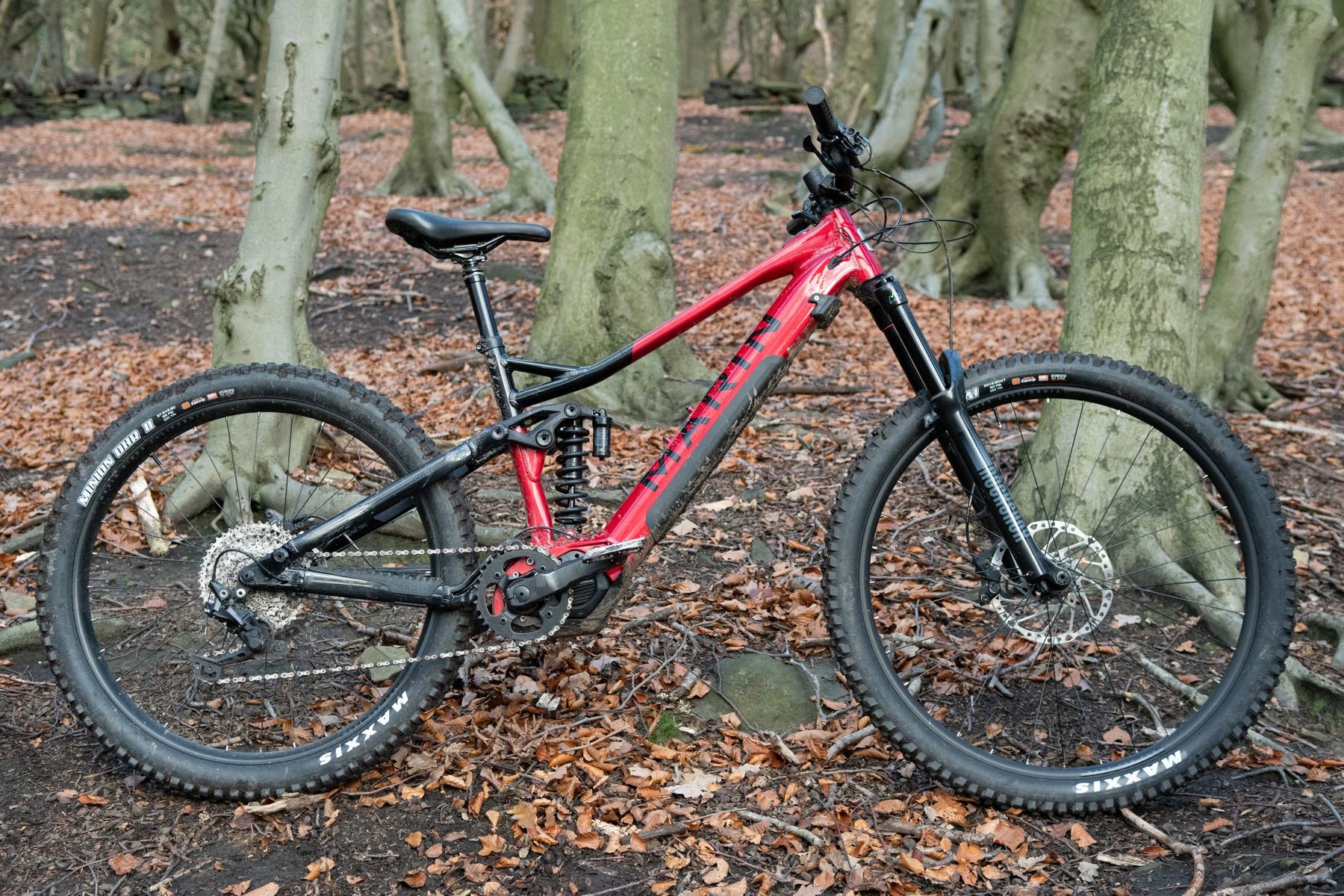
This, then is the Marin Alpine Trail E. This model, dew-plucked from the e-Bike plantation at Marin, comes in two alluring flavours:
The top-whack, primo cha-cha E2 model comes dripping with Shimano EP8 drivetrain trickery, a 640Wh battery, Fox suspension – all of that good stuff. Probably has angels singing arias whenever you get on it.
But this isn’t that one, no. This is the more ‘value orientated’ machine, the E1. We get the same frame, suspension from Rockshox’s more modest offerings (a 35 Gold RL fork has 160mm of travel; a Super Deluxe Coil R shock provides 150mm of rear boing) and Shimano’s E7000 drive unit, with a removable 500Wh battery cunningly concealed within the downtube behind a black battery plate. There’s a Deore 10 speed drivetrain, 203mm rotors for stoppage and some decent rubber in Maxxis’ Assegai 2.5 front and Minion DH 2.8 tyres; in a semi-mullet setup (it’s a 29er at the front and a 27.5plus at the back).
Schralpine Trail
So, it’s clearly not designed as a ‘pootle about around the trails’ sort of bike, this. It’s very much designed for – dare I say it (yes, I do) – great wedges of gnar-schralping, with a motorised assist to get you back to the next bout of nadgery ultratech. It’s burly, and it tries its very best on its budget to brook no argument.
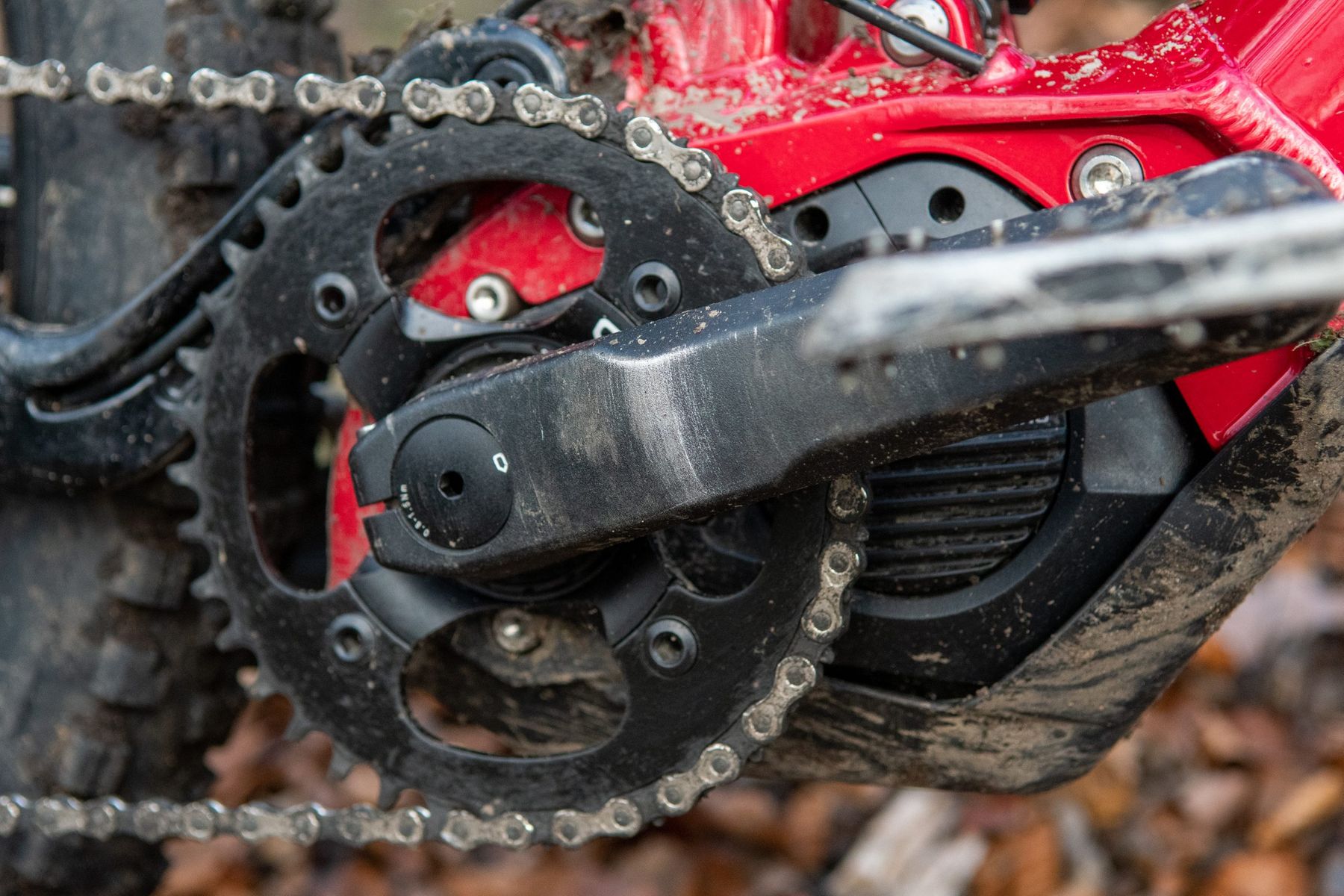
Aesthetically, it’s a pretty piece of kit. The downtube is relatively unobtrusive and slim in profile, although it’s conspicuously wide from the saddle. Below the downtube, the motor unit hides behind a substantial 38t chainring and some short 165mm cranks, which help with ground clearance. Pedal leverage isn’t quite the highest priority on an ebike, which the chonking great motor providing up to 250 Watts of sweet, sweet assistance.
There’s HUUUUGE amounts of standover, for an XL bike at a sniff under 690mm; the seat post is short for an XL at 430mm, and the reach is long-ish, as 505mm. The fork is held at a rakish 63 degree angle, and is pointed with a 35mm stem and a 780mm bar – both Marin own-brand. There’s a size-specific dropper post – the XL bike (the one tested) comes with a 170mm TransX post, the L and M frame sport a 150mm, and the S bike’s saddle is hoisted aloft with 125mm of smooth, glistening black shaft. The seat angle is very à la mode at 78 degrees, the rear tyre is kept under control by short 435mm chain stays.
Strong like bull
The whole bike is built for strength. One of the great things about e-bikes is that it’s possible to spec stronger kit, without paying (quite as) much attention to its weight – the motor can take care of any weight increases, and to be honest the motor and battery add much more heft than, for example, a pair of stout rims would in any case. The Rockshox 35 fork has 35mm stanchions, as you’d expect, given the name. Burly rims also add stiffness; inner widths of 32mm at the front and 38mm at the rear should keep the tyres firmly where they should be, and those 203mm brakes should be able to haul the bike to a stop in pretty short order, despite its 23kg weight.
The E7000 motor and associated electric-trickery is all nicely integrated – there’s an on/off switch on the top tube – and the unit is also handily bluetooth-able, so you can connect it to your phone and adjust the levels and settings on the fly, should you wish to. I managed this (with my apparently completely archaic iPhone 7) with no problems, and I spent a happy ten minutes fiddling with settings before, er, putting it back how it was, and actually going for a ride.
The Ride
The first, overriding impression when swinging a leg over the Alpine Trail E is how short the cockpit feels. The steep seat tube angle, coupled with the slack head angle means that the saddle is really rather forward-feeling, despite that medium-to-generous reach measurement of 505mm for this XL bike. If it weren’t already obvious from the spec, it’s rammed home as soon as you sit astride it that this is a bike focused on the downs, with a motor to assist the ups, rather than an all-day XC machine, for example.
The second thing I swiftly realised is that that seat tube is short for an XL bike at 430mm, or 16.9 inches. While this means that standover is exemplary, it also means that I couldn’t get the saddle up to my comfortable pedalling height with the supplied TransX seat post. Marin tells me that the low stand over allows the bike to be very moveable underneath the rider, and it also allows for a rider to size up if they like a longer reach. Which is totally fair enough.
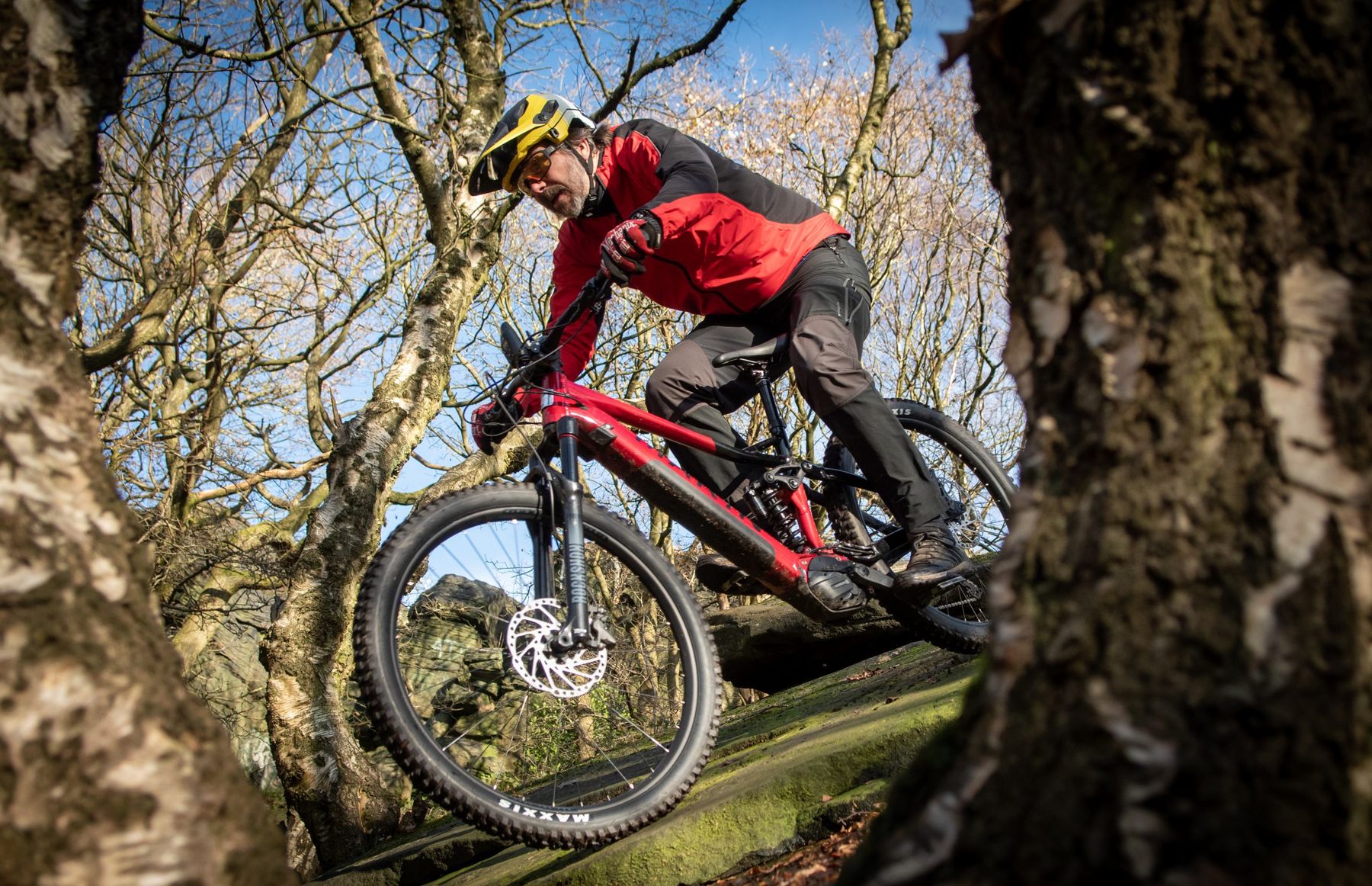
The XL bike, though, only has a 5mm longer seat post than the L – which in turn differs from the M bike by a whopping 20mm. So if you’d usually ride a large bike, but you think you’d like a little more reach, then the XL would be perfect. If this were my bike, though I’d definitely be sticking a 200mm post in there. It’s worth bearing in mind though that I do have rather long legs, even for my height (I’m 6’4”) – and I know of other riders who haven’t found it an issue.
Feel the power
All of this might be much more an issue were it not for the relatively sleek, black motor nestled at the cranks. The E7000 may well be a more budget option compared to Shimano’s EP8 motor – it lacks quite the punch of the more chi-chi unit, with 70Nm of torque available compared to the EP8’s 85Nm, but there was more than enough power available for the vast majority of ill-advised hi-jinks I got up to. Four settings are available, accessed by a thumb switch by the left grip – Off, Eco, Trail and Boost, and each of these can be tweaked using Shimano’s app, blue toothed to the control unit on the bars.
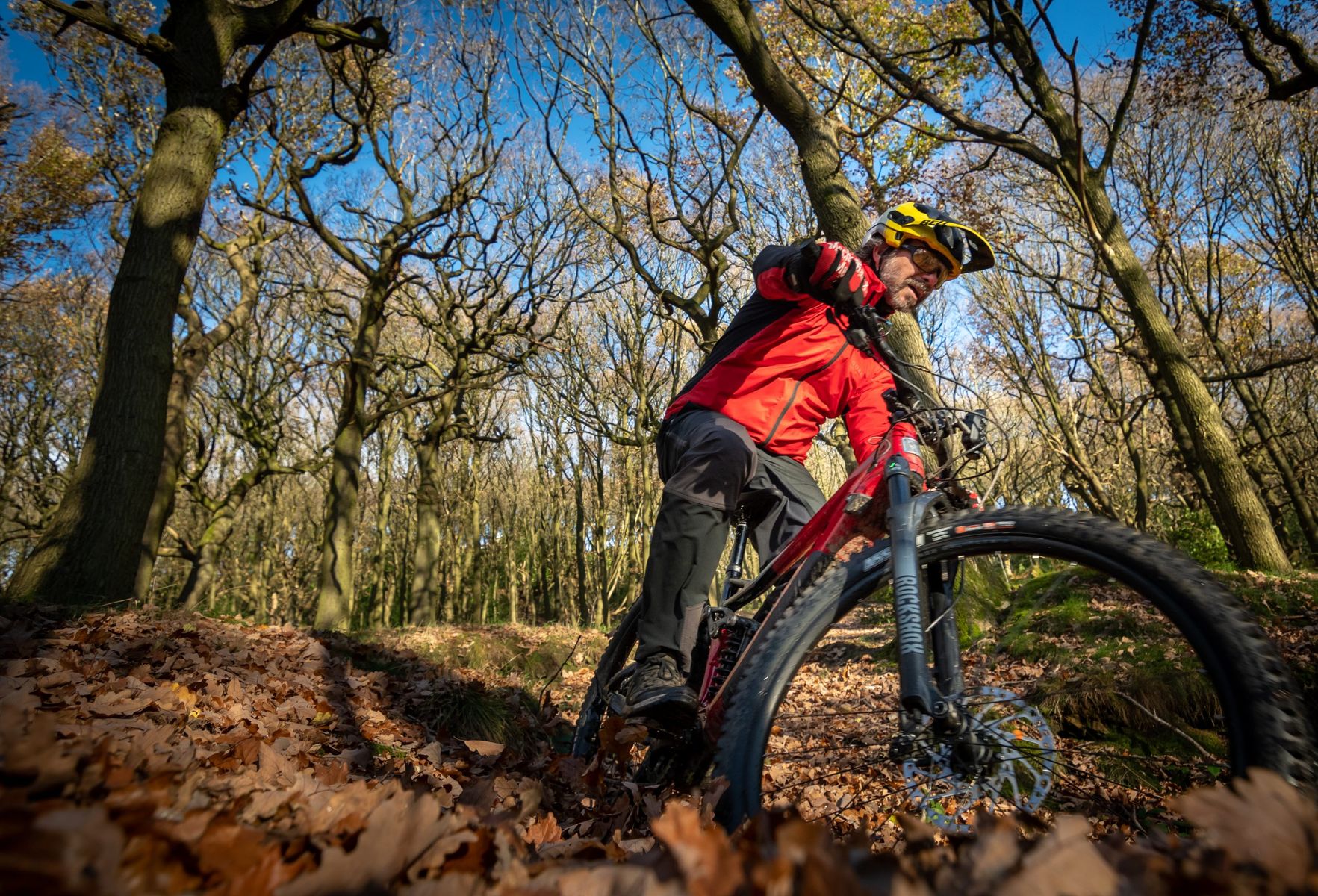
For the most part, I kept the bike in Eco mode, which served to take the edge off the bike’s weight, and left it feeing – dare I say it – sprightly. This setting pretty much makes the Marin feel like a regular bike, but if you had *really* good legs. There’s a slight feeling of give once you put pressure on the pedals as the motor activates, but the sensation is smooth and intuitive, I did ride a few miles with the motor turned off, but in all honesty, this isn’t a fun experience. More than 50lb weight, that short seat post and 165mm cranks don’t make for a fun unassisted experience – but not to worry; the Eco mode is good for plenty of range, with its 500Wh battery. With a bit of judicious juggling, I managed a 50km ride with more than a few hilly sections, juggling between Eco and Trail modes, with a pronounced bout of Boost towards the end when it started hoofing it with rain, the train kicked sharply upwards, and my tea started to look not so much ‘alluring’ as ‘absolutely necessary’.
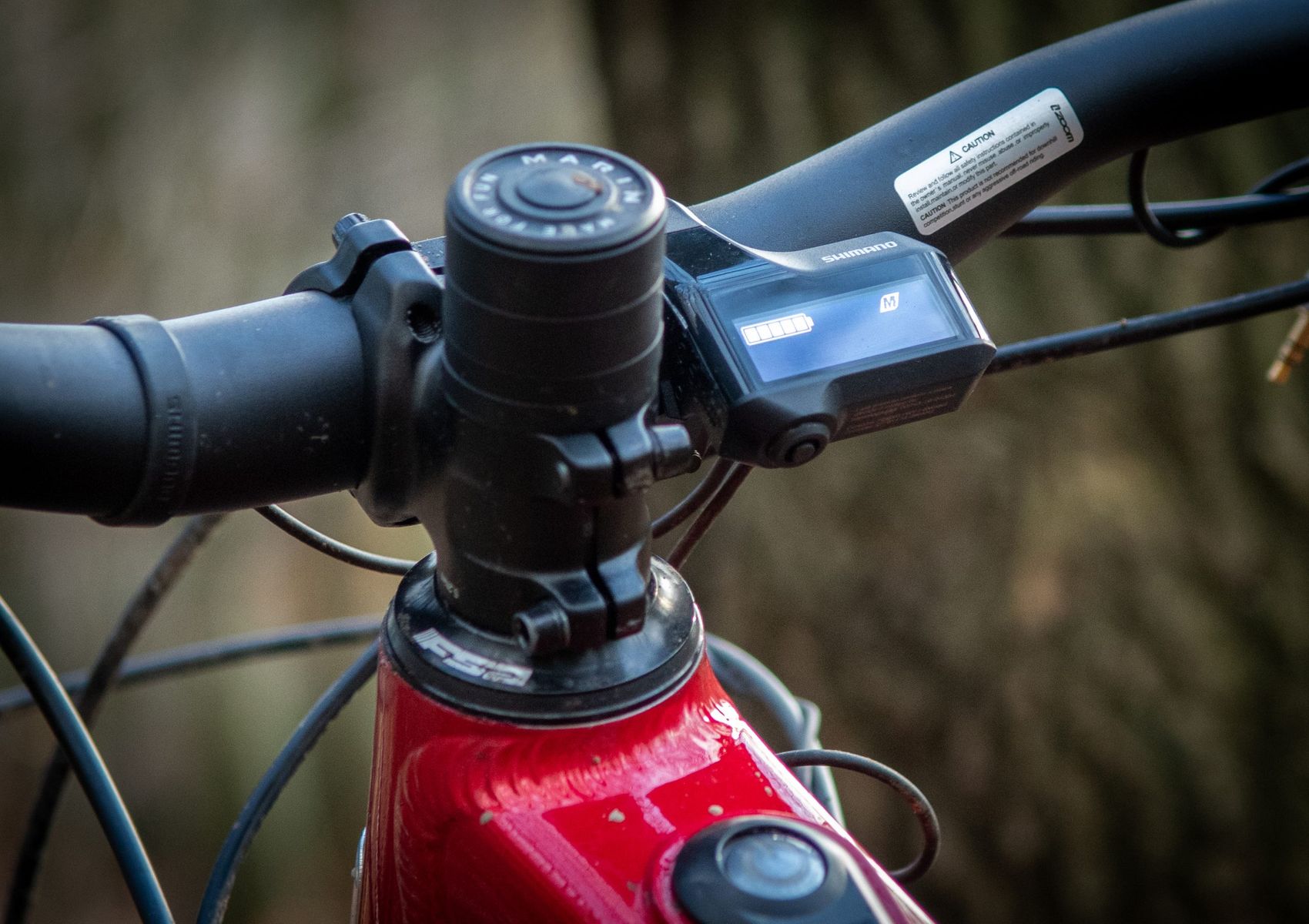
Actually, Trail mode is pretty much all I felt I needed even on the steepest inclines. Boost lets you attack things more quickly of course, but if you keep the gearing high enough, it’s surprising how much of an assist the Trail mode can give. That substantial 2.8 rubber at the back and the upright seating position helmed the bike and motor find traction where none should be. I’ve cleaned steep climbs first try, in the wet (and dark) on the Marin, that is normally reserved for dry days and good legs. Even the short seat post issue didn’t make much of a difference. It’d be a lie to suggest that I breezed up with a simple tickle on the pedals, but it was definitely a much more entertaining experience than it can be on an analogue bike. The motor is pretty quiet compared to some I’ve ridden – even in Boost it was subtle and unobtrusive.
Some downtime
Of course, the meat and potatoes of a bike like this is how it descends, and the Attack Trail E1 doesn’t disappoint. At all. The weight of e-bikes in general doesn’t lend itself to words like ‘nimble’, but the Marin makes up for it in other ways. The tyres were formidable, especially given the slither I found myself riding in for most of the test period. The short-feeling cockpit, with its longish reach, felt marvellously stable, and the faster I went, the more alive it felt. The short back end does what it can to make the bike corner faster than it really has any right to – especially if you weight the front end – which was also much easier to loft to get over obstacles than I expected, and the short crankarms gave commendable standover and practically no pedal strikes when attacking janky chunder.
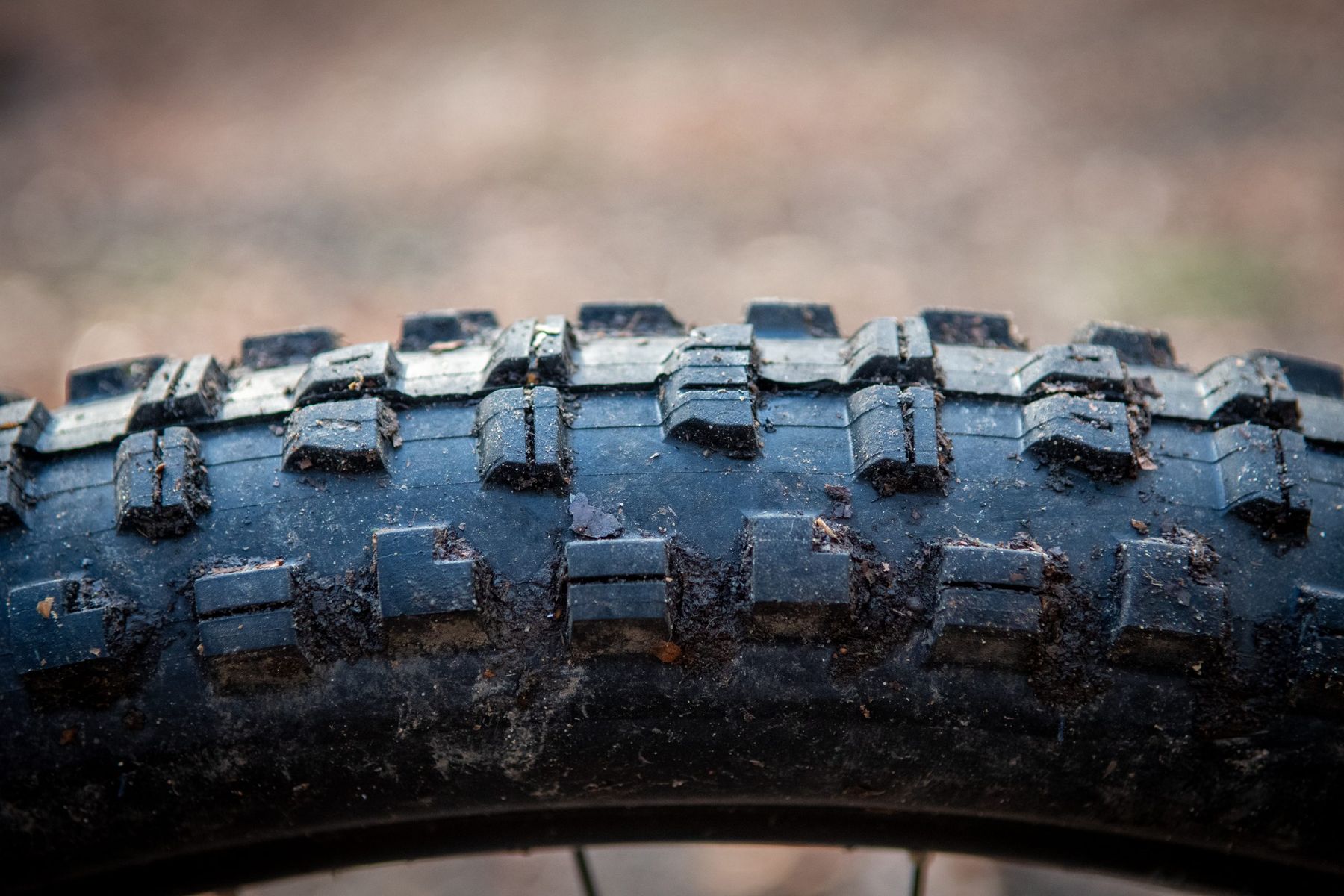
Forkular bounceage
Speaking of the front end, I wasn’t sure what to expect from the fork. I’ve ridden previous erstwhile ‘budget’ offerings from Rockshok, the 28 and the 30. Given that the numbers denote the stanchion diameter, I found them understandably somewhat noodly, and they’d have a tendency to bind and twang when loaded on corners. Any of the other characteristics of the forks were overshadowed by the chassis – so the 35 Gold RL, with essentially the same chassis, and therefore external stiffnesses as the Pike et al, is an intriguing (and very necessary) proposition.
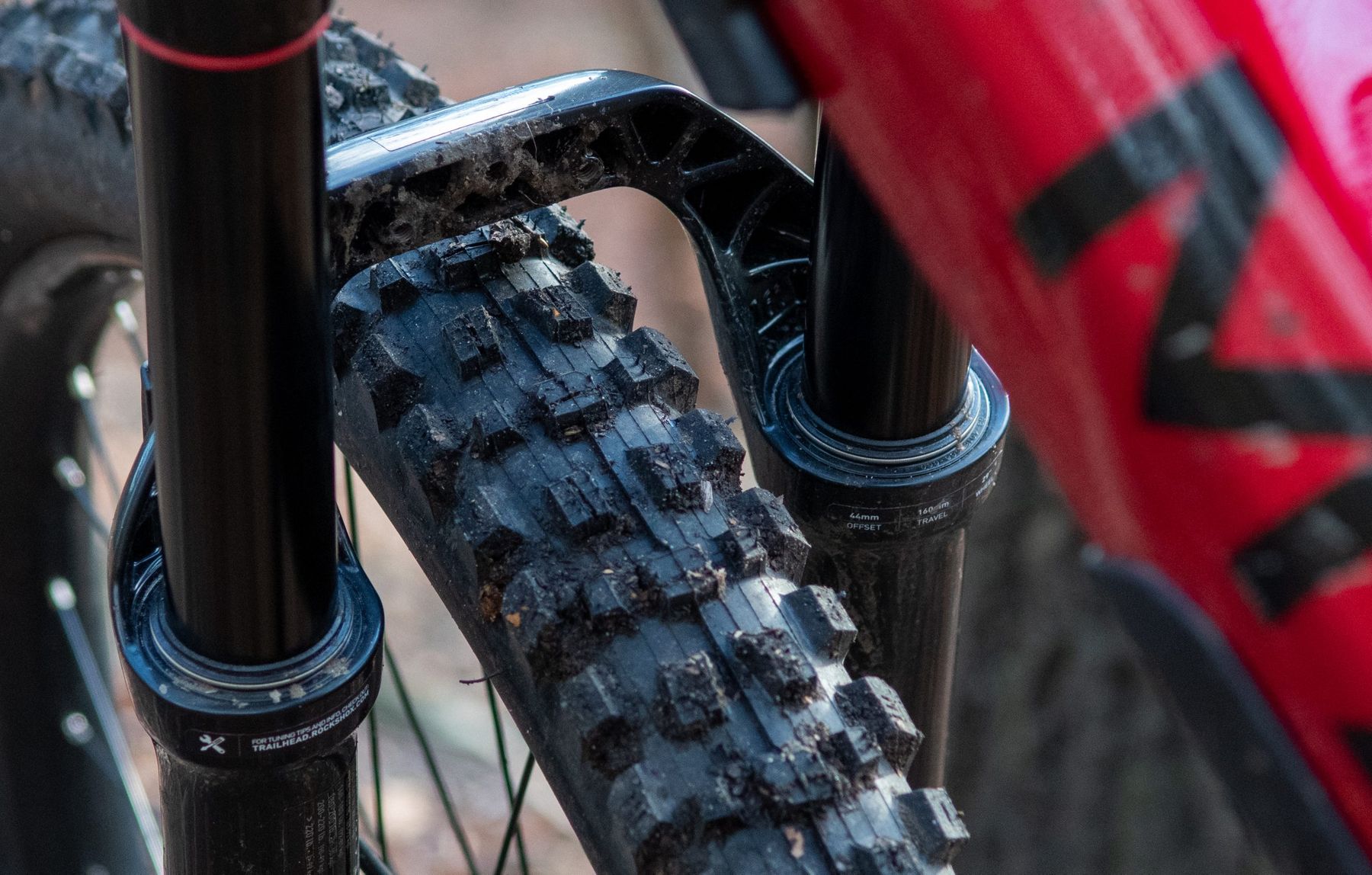
The seals on this test fork don’t feel as buttery smooth as the latest Lyric or Pikes, despite my best efforts, which might be a cost compromise. But although the fork might not be as sensitive on the tiny hits, they worked perfectly well on the Alpine Trail E1. High speed, steppy corners, typically the nemeses of slimmer forks, were despatched with commendably few issues unless I went in far too hot and over-loaded the front. And even then, it recovered quickly. The Motion Control damper is pretty old, but it still works very well – there’s even a fork-mounted lockout. Which, to be honest, felt pretty unnecessary (but it’s nice to have).
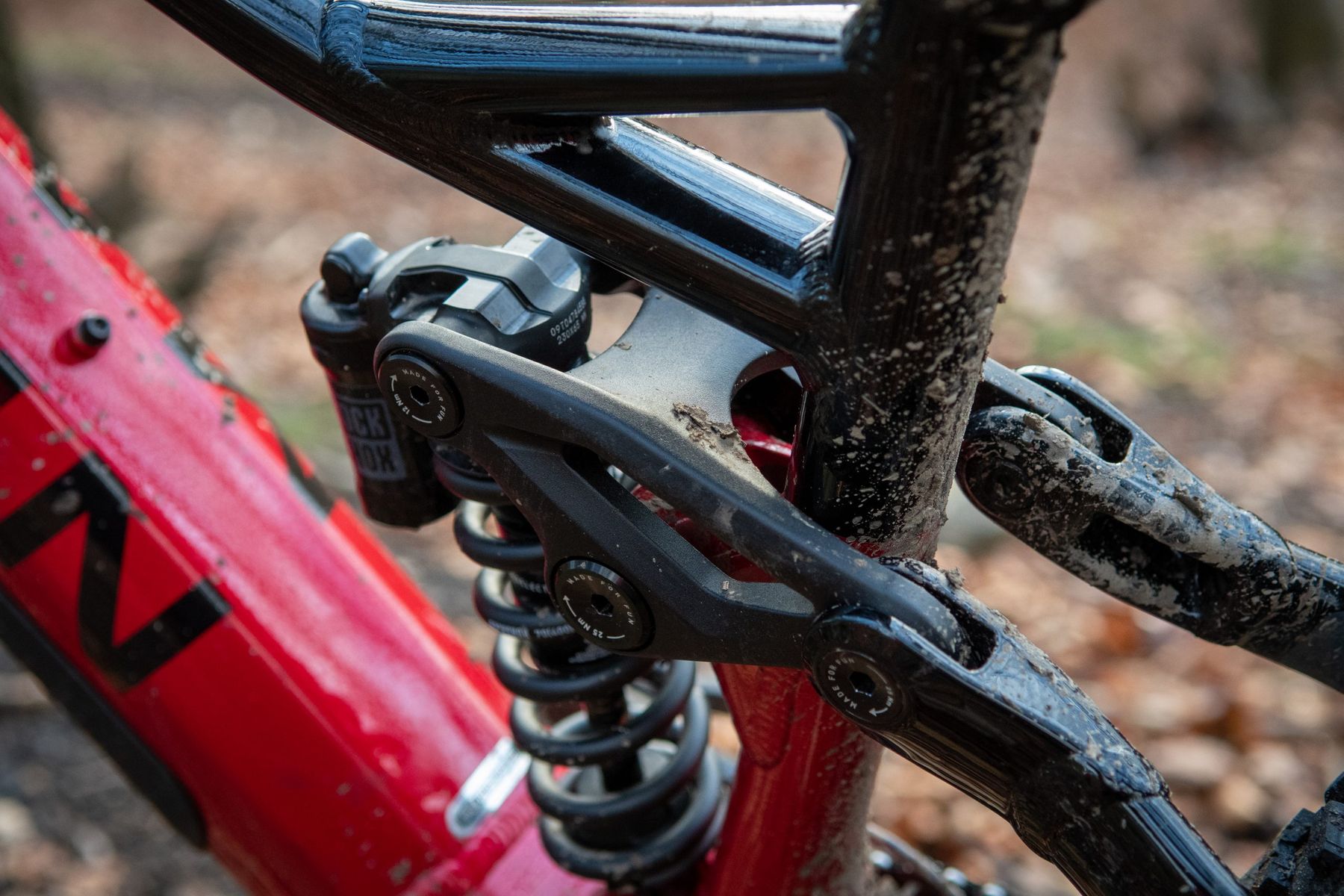
The rear suspension’s coil shock delivered, too. It’s been a while since I’ve spent any time on a coil shock, and it was a happy reminder that a well-set up coil system is unbeatably plush. There was little bob, and lateral stiffness also felt good, once I’d figured how to exaggerate my weight placement (compared to a non-ebike) to get the most out of it.
3 things that could be improved:
- I wish the seat tube was longer on the XL!
- The saddle (always a personal choice ) wasn’t the comfiest.
- The fork seals maybe? OK, I’m clutching at straws here.
3 things that I loved:
- So much traction from that rear tyre
- Surprisingly quiet motor
- Riding steep things was a *complete* hoot
Overall: Alpine of the Times
So the Alpine Trail E1, then, is a charger. Give it free reign, and it’ll happily carve a swathe through the chunderiest of jank – although I found its weight initially didn’t help on very slow speed tech, but this is true of all bikes that weigh north of 20kg. Honestly, though, that’s more about becoming accustomed to them than anything else; ebikes simply require more body English, and all that weight low down also serves to lower the centre of gravity. So a few modifications to my riding style soon ameliorated many of my issues; I was soon skipping the back wheel up and over thrutchy segments with gay abandon.
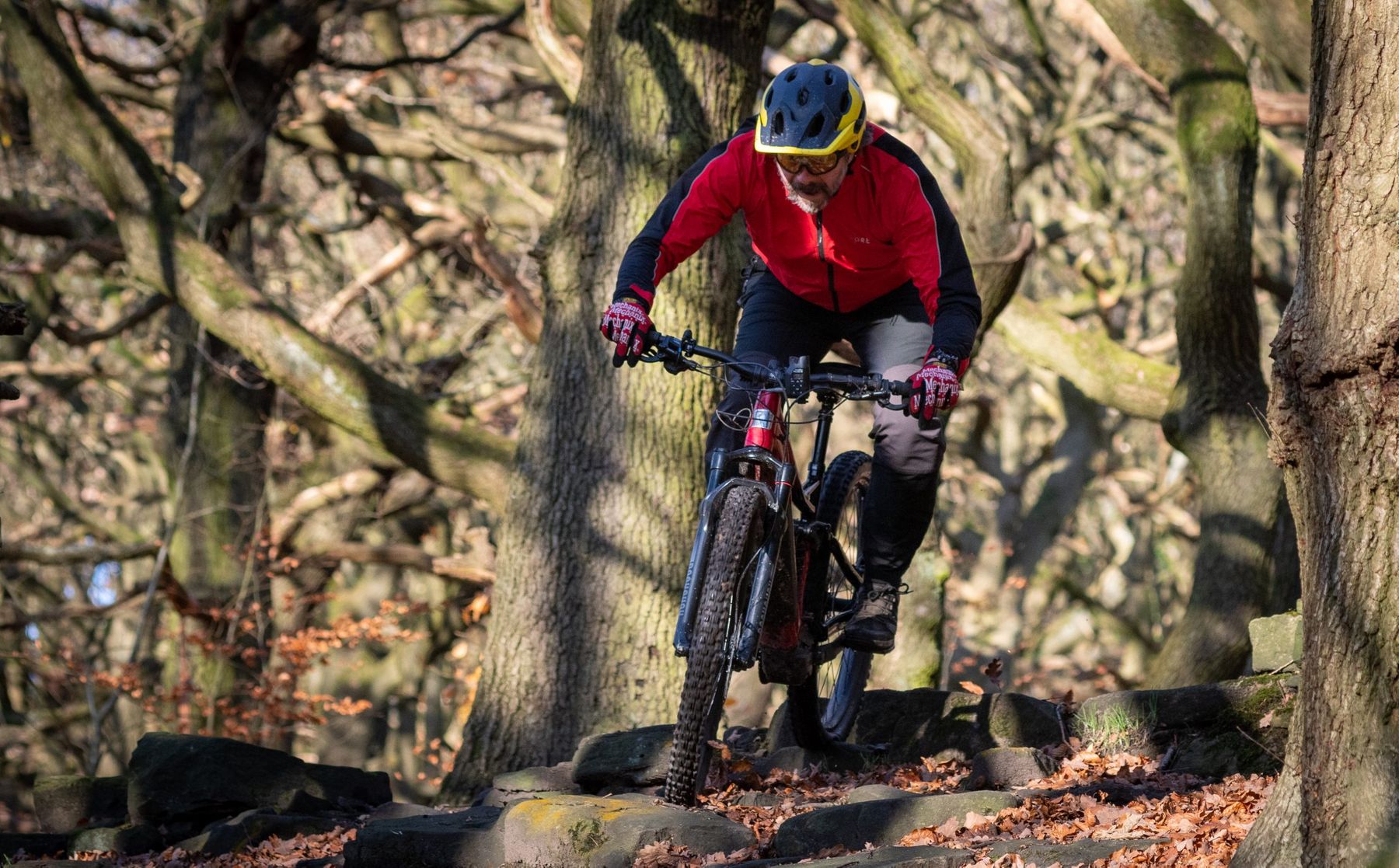
Ebikes are the fastest growing segment of the cycling market at the moment, and Marin’s Alpine Trail E2 is an excellent addition to the options available. Although it’ll function as an all-day trail bike, it’s really happiest playing on something steeper and then winching back to the top. And at this, it excels. I’d have liked the seat tube on the XL to be a little longer (or for there to be the option of a 200mm dropper post), but if the E1 fits you, it’s a fantastic piece of kit out of the gate, at an excellent price point.
2021 Marin Alpine Trail E1 Specification
- Frame: Series 4 Alloy Frame, 150mm travel
- Rear Shock: RockShox Super Deluxe Coil R
- Fork: RockShox 35 Gold RL 29”
- R. Derailleur: Shimano Deore 5100
- Shifters: Shimano M4100 10sp
- Cassette: Shimano M4100 10sp
- Chain: KMC x10E
- Chainguide: e13 Plus Chainguide
- Headset: FSA no 57, semi-sealed bearings
- Rear Tire: Maxxis Minion DHR II 27.5″x2.8″, 3C, MaxxTerra, EXO+,TR
- Front Tire: Maxxis Assegai 29″x2.5″, 3C, MaxxTerra, EXO+ TR
- Front Hub: Marin 110×15
- Rims: Marin Alu Doublewall, 29” 32mm width (F) and 27.5” 38mm width (R). Tubeless compatible.
- Rear Hub: Shimano HB-MT400B 148×12
- Rotors: 203mm Shimano rotors
- Brakes: Shimano MT420 4-pot
- Crankset: Marin Forged alloy 165mm
- Handlebar: Marin Mini Riser 780mm, 6061 alloys 28mm rise
- Stem: Marin 3D Forged alloy 35mm
- Saddle: Marin E-MTB
- Seatpost: TransX YSP23JL
- Grips: Marin Single Clamp Locking
- Battery: Shimano BT-8035 504Wh Integrated
- Drive Unit: Shimano STEPS E7000, 250W 60Nm
- Display: Shimano Display Unit SC-E7000
- Price: £4,295






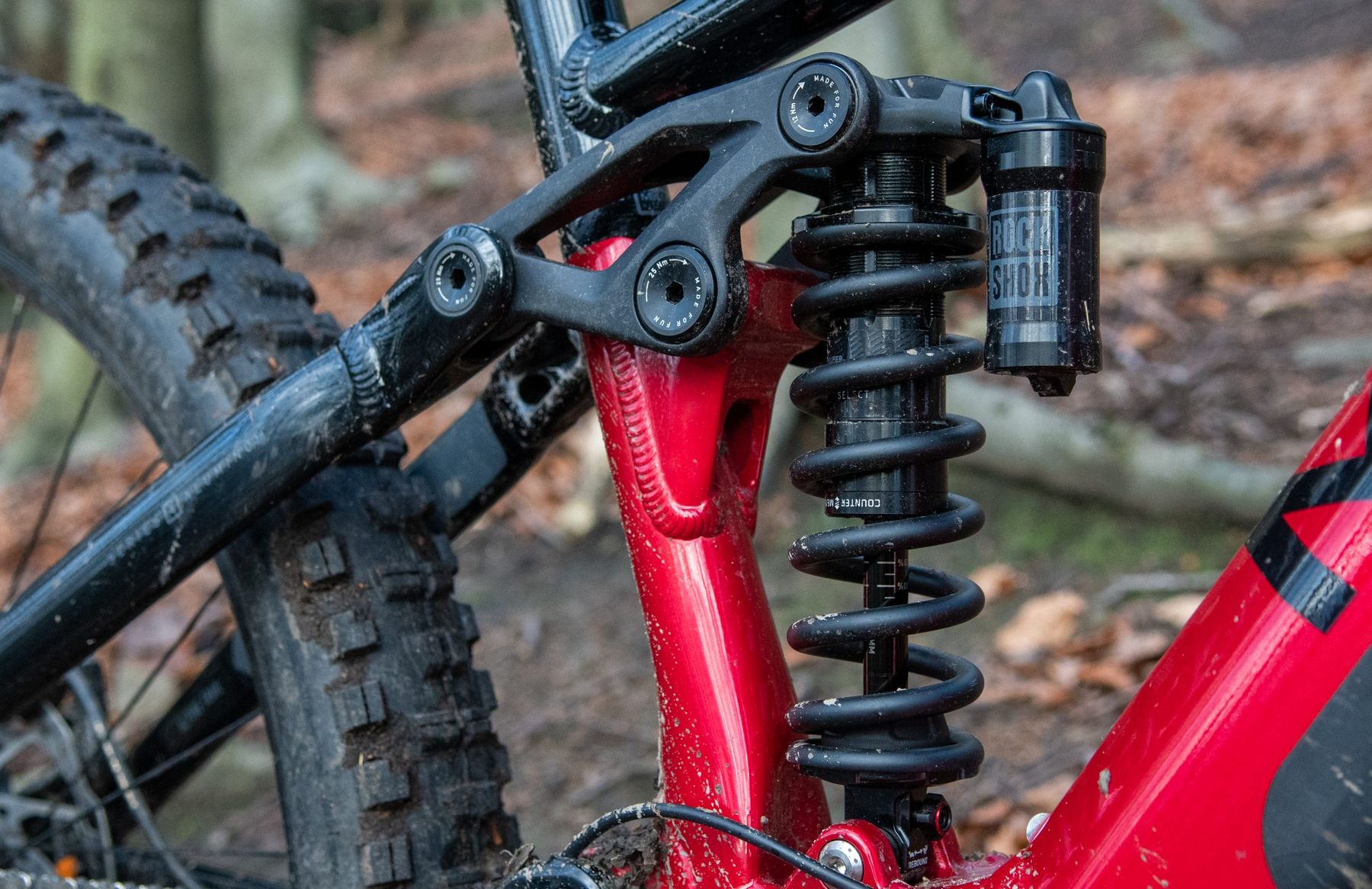

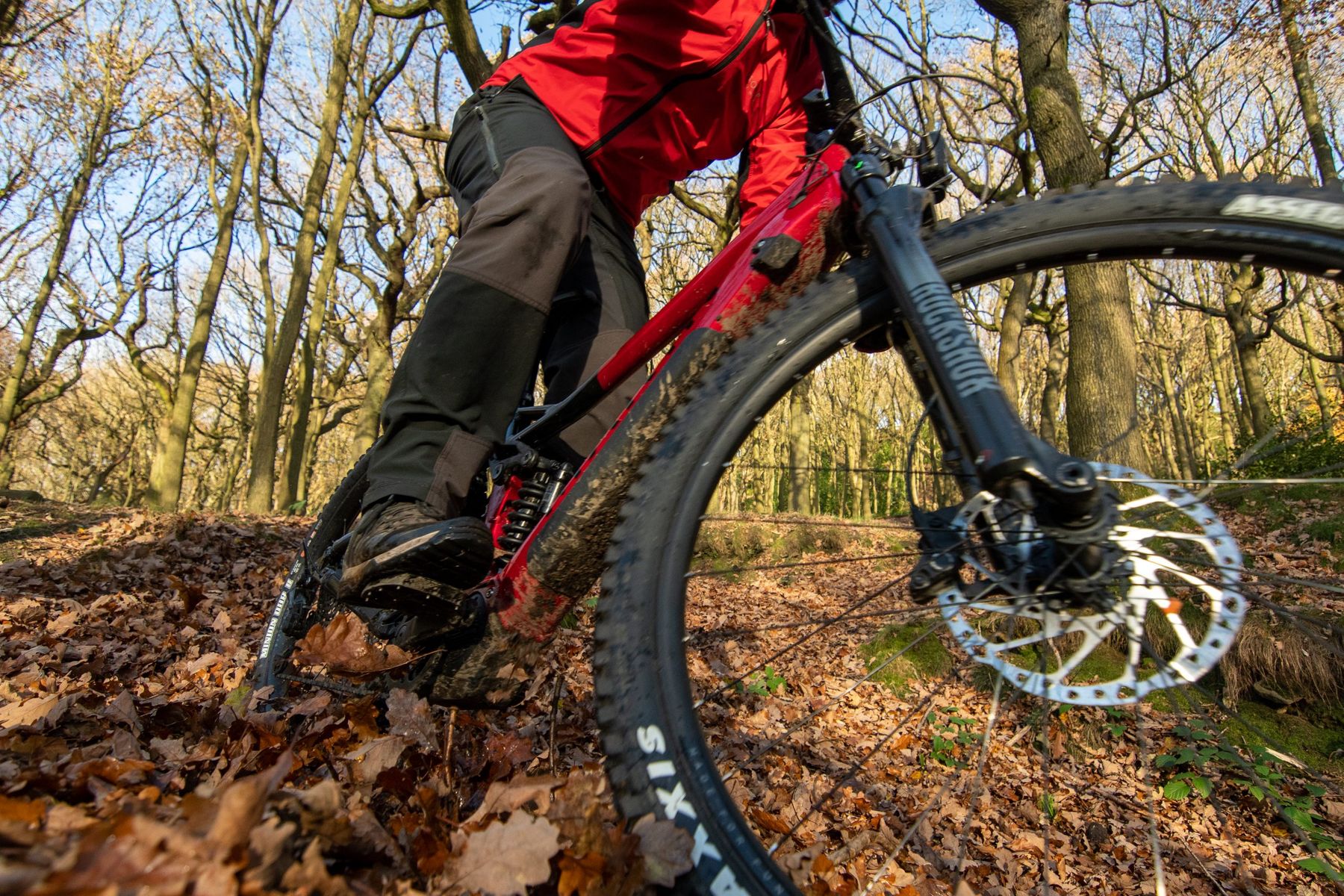
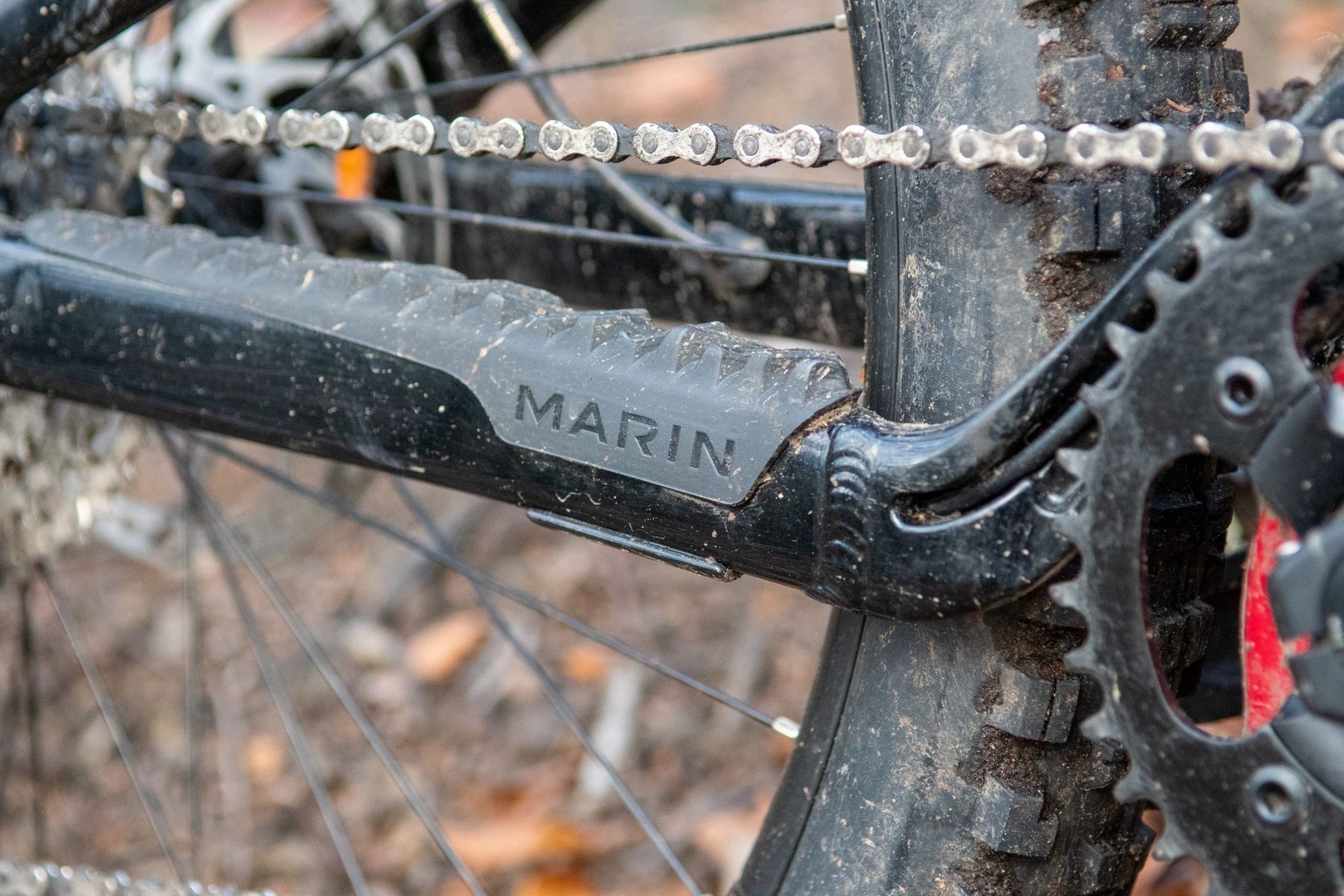
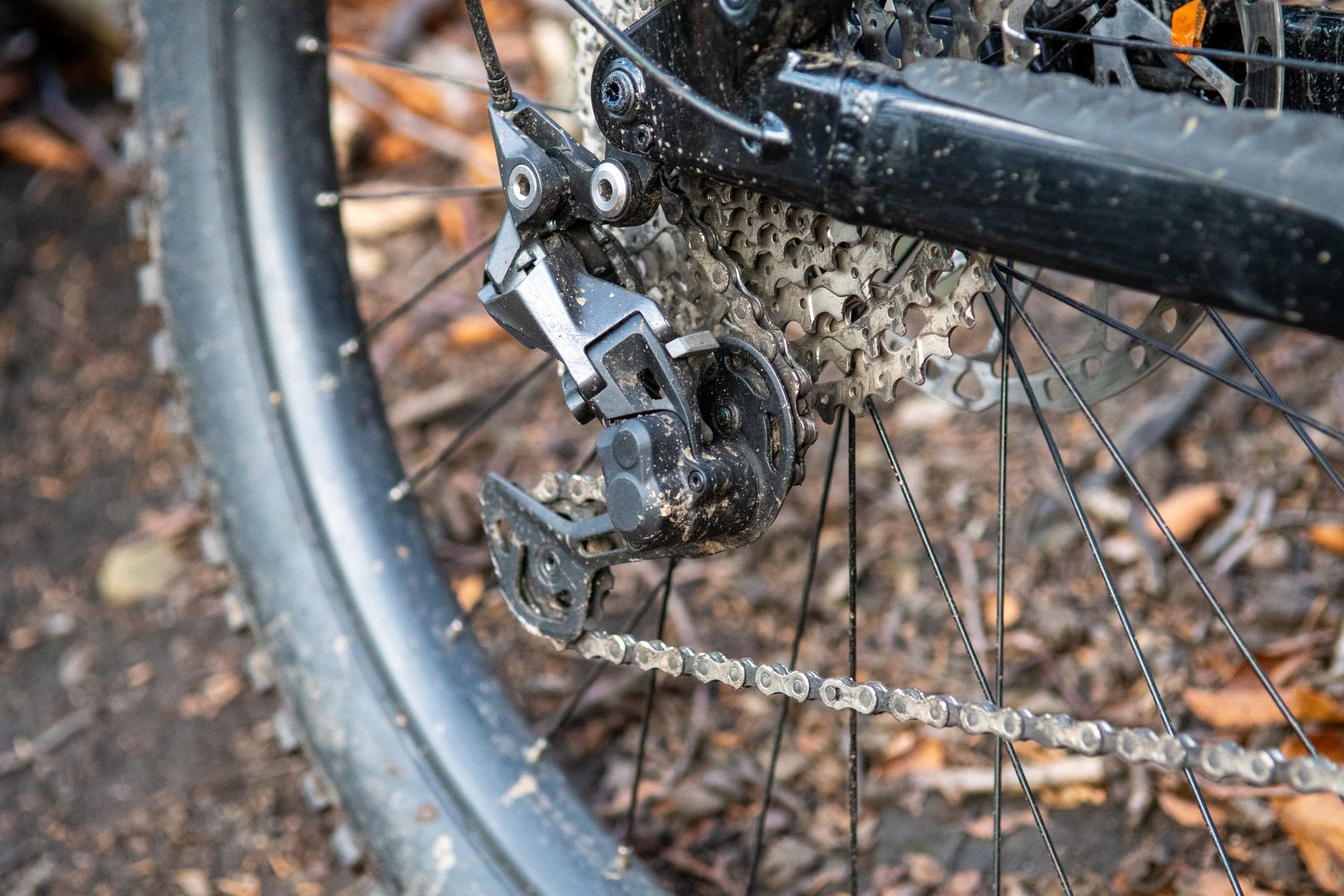
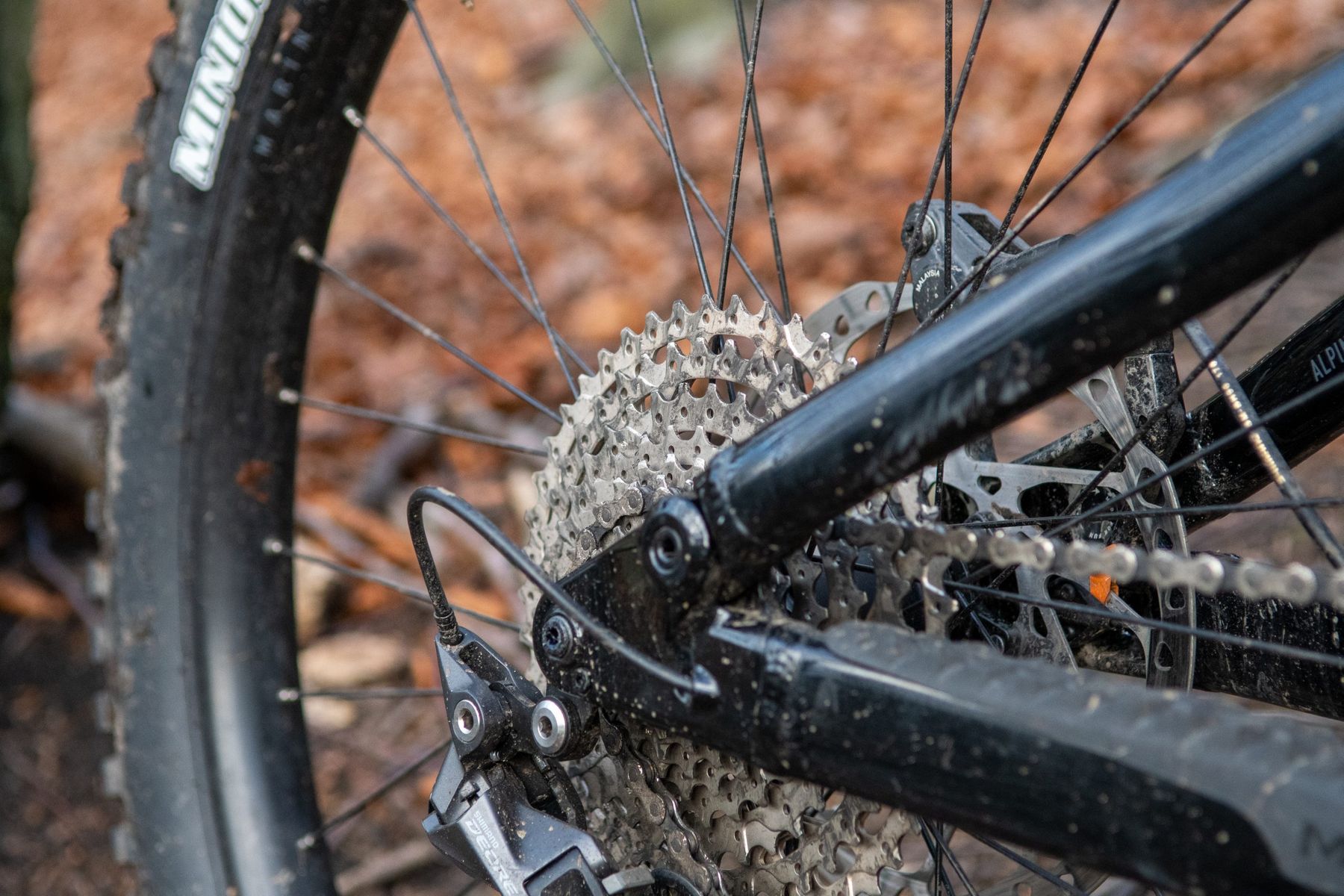

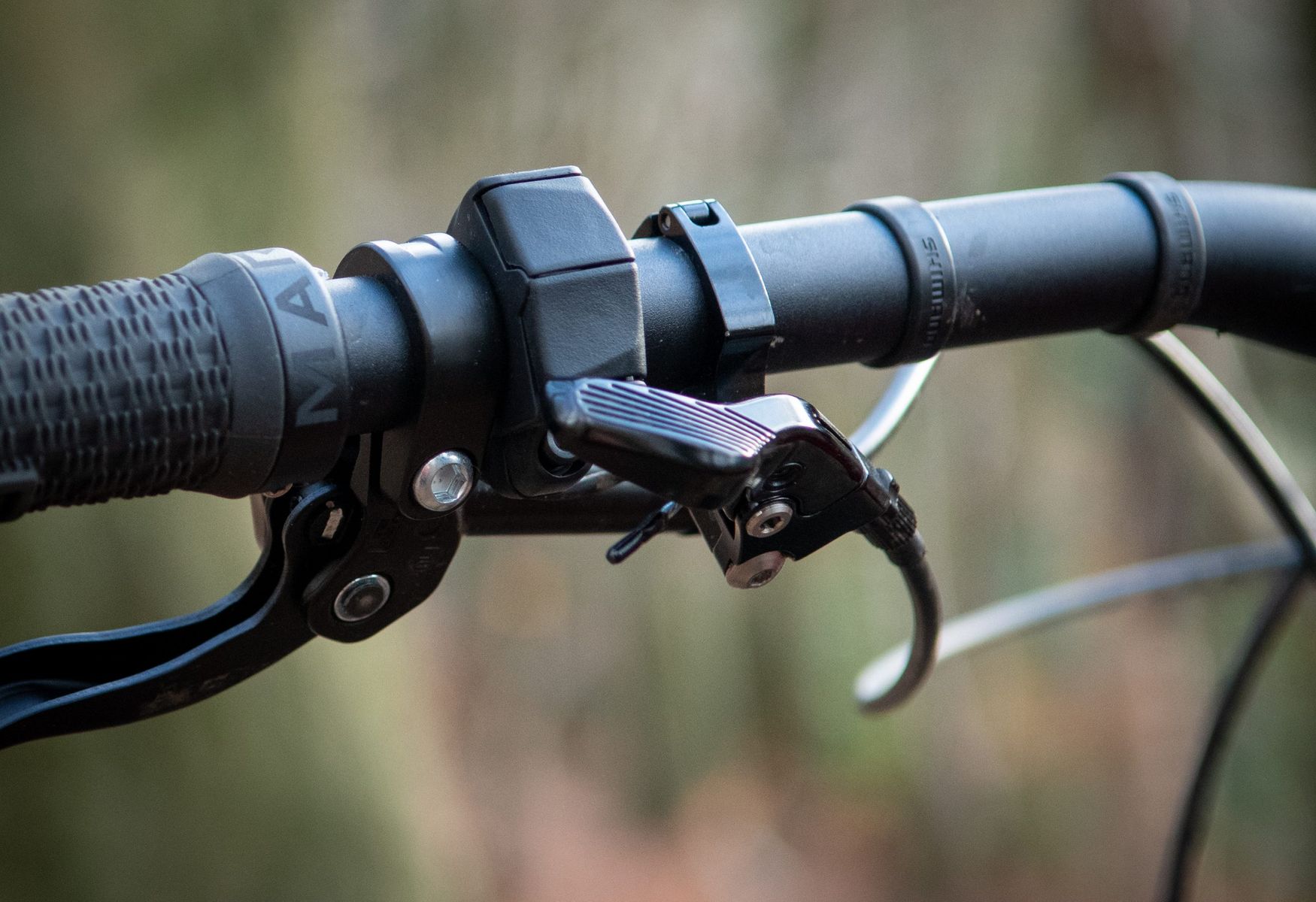

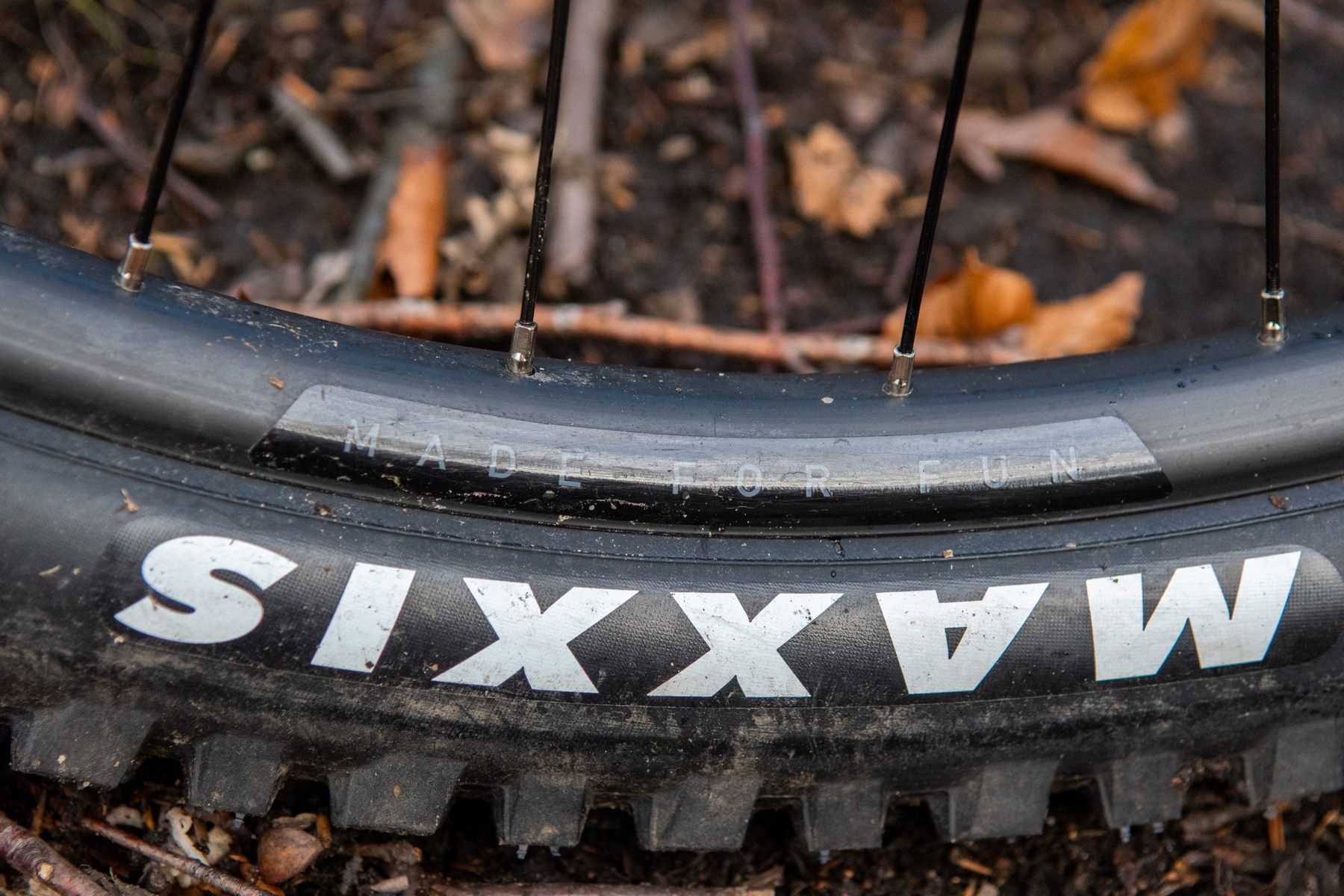



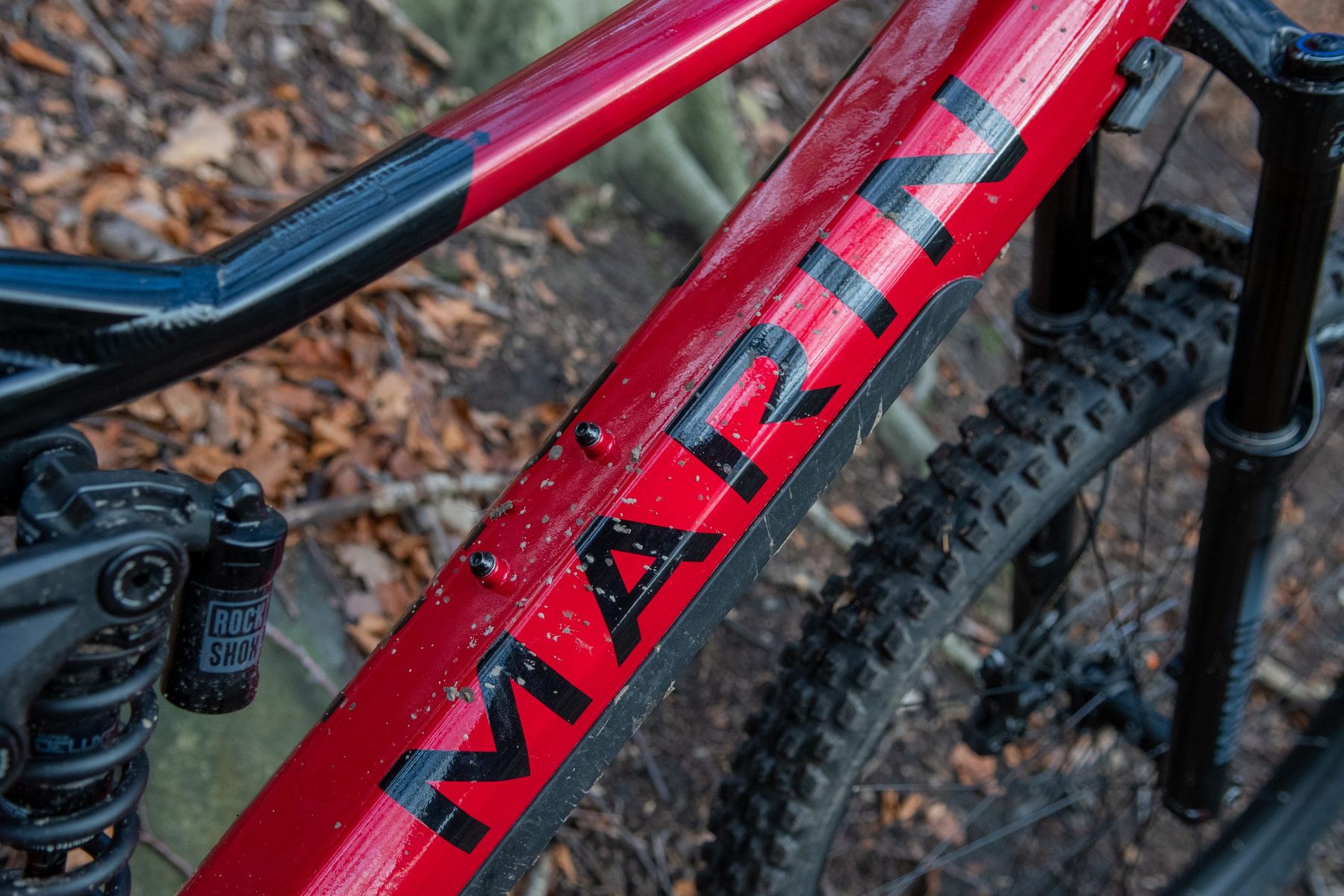

So you weighed it yourself at 23 kg?
How much vertical meters did you get in eco mode on your 50 km lap?
Cheers